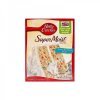| Amount Per 0.125 cake | |||
| Calories | 280 Kcal (1172 kJ) | ||
| Calories from fat | 135 Kcal | ||
| % Daily Value* | |||
| Total Fat | 15g | 23% | |
|---|---|---|---|
| Saturated Fat | 6g | 30% | |
| Cholesterol | 25mg | 8% | |
| Sodium | 160mg | 7% | |
| Total Carbs | 37g | 12% | |
| Sugars | 28g | 112% | |
| Protein | 2g | 4% | |
| Calcium | 40mg | 4% | |
* Percent Daily Values are based on a 2000 calorie diet. Your daily values may be higher or lower depending on your calorie needs.
Find out how many calories should you eat.
Ingredients And Nutrition Overview
Best
choice Good
choice Poor
choice Avoid
it!
choice Good
choice Poor
choice Avoid
it!
-
WeightWatchers Points: 6.9, PointsPlus: 8, SmartPoints: 13
WeightWatchers Points are estimated by carbohydrates, fats, protein and fiber in product. They are not an affirmation of better quality or nutritional value of the product or its manufacturer. Only way to count for dieters. Less points are better.
Read more at Weight watchers diet review -
4.5 tsp of sugars per serving
This includes both naturally occurring and added sugars. According to the USDA, every man woman and child in the US consumes approximately 80 pounds of caloric sweeteners per year! That works out to 25 tsp of sugars per day, or 400 extra calories!
-
Contains controversial artificial colors
Once upon a time, there were no food colorings. Then folks figured out that food looks better and sells more when it can be enlivened through dyes. For most of food history, the dyes were from natural sources – beet juice for red, turmeric for yellow,etc… However, in the quest to increase color intensity and lower manufacturing costs, cheap artificial dyes were introduced to market. Unfortunately they pose a risk for hyperactivity in children, cancer, and allergic reactions. ----------- Sources: Feingold BF. Hyperkinesis and learning disabilities linked to artificial food flavors and colors. Am J Nurs 1975; 75-5: 797-803. Harley JP, Matthews CG, Eichman P. Synthetic Food Colors and Hyperactivity in Children: A double-blind challenge experiment. Pediatrics 1978; 62: 975-983. Kobylewski S, Jacobson M. Toxicology of food dyes. Int J Occup Env Heal 2012; 18-3: 220-246. McCann D, Barrett A, Cooper A, Crumpler D, Dalen L, Grimshaw K, Kitchin E, Lok K, Porteous L, Prince E, Sonuga-Garke E, OWarner J, Stevenson J. Food additives and hyperactive behavior in 3-year-old and 8/9-year-old children in the community: a randomized, double-blinded, placebo-controlled trial. Lancet 2007; 370: 1560-67. Schab DW, Trinh NT. Do artificial food colors promote hyperactivity in children with hyperactive syndromes? A meta-analysis of double-blind placebo-controlled trials. J Dev Behav Pediatr 2004; 25: 423-434. Sonuga-Barke EJS, Hollis C, Brandeis D, Konofal E, Cortese S, Lecendreux M, Daley D, Wong I, Ferrin M, Sergeant J, Holtmann M, Stevenson J, Danckaerts M, Van Der Oord S, Dopfner M, Dittmann R, Simonoff E, Zuddas A, Banaschewski T, Buitelaar J, Coghill D. Nonharmacological interventions for ADHA: Systematic review and meta-analyses of randomized controlled trials of dietary and psychological treatments. Am J Psychiatry 2013; 170-3: 275-289. Stevens LJ, Kuczek T, Burgess JR, Hurt E, Arnold LE. Dietary sensitivities and ADHD symptoms: Thirty-five years of research. Clin Pediatr 2011; 50:279-293. Williams JI, Cram DM, Tausig FT, Webster E. Relative effects of drugs and diet on hyperactive behaviors: An experimental study. Pediatrics 1978; 61-6: 811-817.
-
For dieters: FoodPoints value is 5
* FoodPoints are calculated by Fooducate based on fats, carbs, fiber, and protein. They are not an endorsement or approval of the product or its manufacturer. The fewer points - the better.
-
Contains fully hydrogenated oils
Although these oils are not trans fat, they do cause an oil to contain more saturated fats than it originally had. Which is not good. ---- Sources: Lefevre M, Mensink RP, Kris-Etherton PM, Petersen B, Smith K, Flickinger BD. Predicted changes in fatty acid intakes, plasma lipids, and cardiovascular disease risk following replacement of trans fatty acid-containing soybean oil with application-appropriate alternatives. Lipids. 2012;47(10):951-62. FAQs about Fats - American Heart Association
-
Highly Processed!
This product is highly processed. If you'll take a look at its ingredient list, you'll discover new words to add to your vocabulary. Many of theses ingredients are required to increase the shelf life of the product and improve the flavor that disappears when food is not fresh.
-
Learn about industrial caramel coloring
Homemade caramel is made by melting sugar in a saucepan. Brown coloring in sodas and some other products is not the same thing. Industrial caramel coloring is made by reacting sugars with ammonia and sulfites under high pressure and temperatures. The chemical reactions create 4-methylimidazole, which in government-conducted studies caused lung, liver, or thyroid cancer or leukemia in laboratory mice or rats. This is why California recently required foods containing caramel color to be labeled as potential cancer-causing agents. But you won't see this warning label any time soon - manufacturers simply reduced the use of caramel color enough that the labeling requirements no longer applied. Caramel color varies slightly between products - when in beer, sauces or baked goods it has just ammonia and when used in soft drinks, it has both sulfites and ammonia. Neither one is a "good" option. Bottom line: Choose something else, less controversial.
-
One of the worst products in its category
This product is in the bottom 10% of the products in its category
-
Contains glycerides
Mono and diglycerides are commonly used in processed foods to maintain stability in liquid products and "improve" quality in baked goods. These glycerides could be created using both hydrogenated and partially hydrogenated oils or animal fats. In theory, this may transfer a small amount of trans fats into the product. The glycerides are synthesized into phosphates by reacting with phosphorus pentoxide, a potential environmental hazard. But that's only part of the problem . . . The presence of mono and diglycerides should discourage you from buying a product for more than just these reasons: their inclusion in a product indicates that it is industrially processed. Choose products without mono and diglycerides not only for health reasons, but because you are getting a better quality food item overall.
-
Contains artificial flavors. Learn why
Companies add artificial flavors to products to make them taste better. They are created in a lab and the formulations are guarded as trade secrets. Flavorings can compensate for flavor loss during processing, substitute for ingredients, lower production costs and increase shelf stability. Artificial flavorings are cheaper to source than natural flavors and are perceived as "worse" than natural flavors. They are more stable (and usually less chemically complex) than natural flavors. Artificial flavors are not necessarily bad for you from a health perspective. however, people with food sensitivities or allergies may want to avoid artificial flavors if they are unnamed. You can always contact the manufacturer for more information.
-
Learn about corn syrup, found here
Corn syrup is often used as a sweetener in processed food. It is NOT THE SAME as high fructose corn syrup. Don't be fooled when looking up the amount of sugar a product contains if corn syrup is listed as an ingredient. This is because corn syrup contains 50% sugar, and 50% of another form of carbohydrate known as ""oligosaccharides"", which is pretty close to sugar. If a product has less sugar than you think it should, but contains corn syrup in the ingredient list, you'll know that the missing carbs are those oligosaccharides, not much better.
-
What's the deal with glycerin?
Glycerin (glycerol, glycerine) is used in products as a sweetener, thickener or preservative. It has the same number of calories as sugar and is about as sweet, but has a lower glycemic index (GI). It should be considered a carbohydrate, but many companies do not properly list it. Glycerin is also used to keep food moist - this same property also can cause water retention. It's generally accepted as healthy and safe. For people with heart, liver or kidney problems, it's best to avoid this ingredient.
-
Natural flavors added. Learn why
Companies add flavorings to make products taste better. They are created in a lab and the formulations are guarded as trade secrets. Flavorings can compensate for flavor loss during processing, substitute for ingredients, lower production costs and increase shelf stability. Natural flavorings are more expensive to source than artificial flavors, but tend to be better received by consumers. People sensitive to MSG, vegans, vegetarians and those with allergies should pay special attention to the phrase "natural flavorings" since glutamates, animal products or allergens may be the source of natural flavors. You can always contact the manufacturer for more information.
-
Learn about soy lecithin, found here
Lecithins are oily substances that occur naturally in plants (soybeans) and animals (egg yolks). Soy lecithin possesses emulsification properties. This means it can keep a candy bar “together” by making sure that the cocoa and the cocoa butter don’t separate. It is also used in bakery items to keep the dough from sticking and to improve its ability to rise.
-
Learn about carnauba wax
Carnauba wax is a natural wax sourced from the leaves of Brazilian trees called Copernicia prunifera. That’s why it is sometimes it’s called Brazil wax. The wax is obtained by beating the leaves until the wax flakes off. It is then refined and bleached. Carnauba wax holds some interesting properties. It is not toxic. It has a very high melting point (178 degrees Farenheit). It is very durable. Thus, it is used in endless applications: shoe polish, dental floss, candy, floor polish, auto wax, and more.
-
Learn about Xanthan Gum, found here
Xanthan gum is an emulsifier. It helps ingredients blend more effectively and stay blended while waiting on a shelf. For example – water and oil mixtures, as well as bits of spice in a salad dressing. Xanthan Gum is made by fermenting corn sugar with a bacteria, Xanthomonas campestris. It’s the same bacteria that creates black spots on broccoli and cauliflower. The result is a slimy goo that is then dried up and ground into a fine white powder.
-
What is Sodium Stearoyl Lactylate?
Sodium Stearoyl Lactylate is a chemical similar to lactic acid used in the processing of food. The FDA and consumer organizations have found it safe. We don't think it's dangerous, however, it is an indicator that the product is processed. We like that it's biodegradable, but still . . . it provides no nutritional value and few consumer benefits. When buying food, keep in mind that the presence of Sodium Stearoyl Lactylate means that this item is processed. It makes bread look big and fluffy, icing look light and pillowy, and reduces the amount of fat and sugar needed in baked goods. Sodium Stearoyl Lactylate makes processed food cheaper, more beautiful and gives it a more appealing texture. We recommend avoiding it if because we like food to be processed as little as possible . . .
You Might Also Like
% RDI of Main Nutrition Facts
14%
of RDI* (280 calories) 64 g
-
Cal: 14 %
-
Fat: 23.1 %
-
Carb: 12.3 %
-
Prot: 4 %
-
0%25%75%RDI norm*
Calories Breakdown
- Carbs (50.9%)
- Fat (46.4%)
- Protein (2.7%)
Get Your Recipe of Health!
Follow RecipeOfHealth on Facebook!
















Add your comment